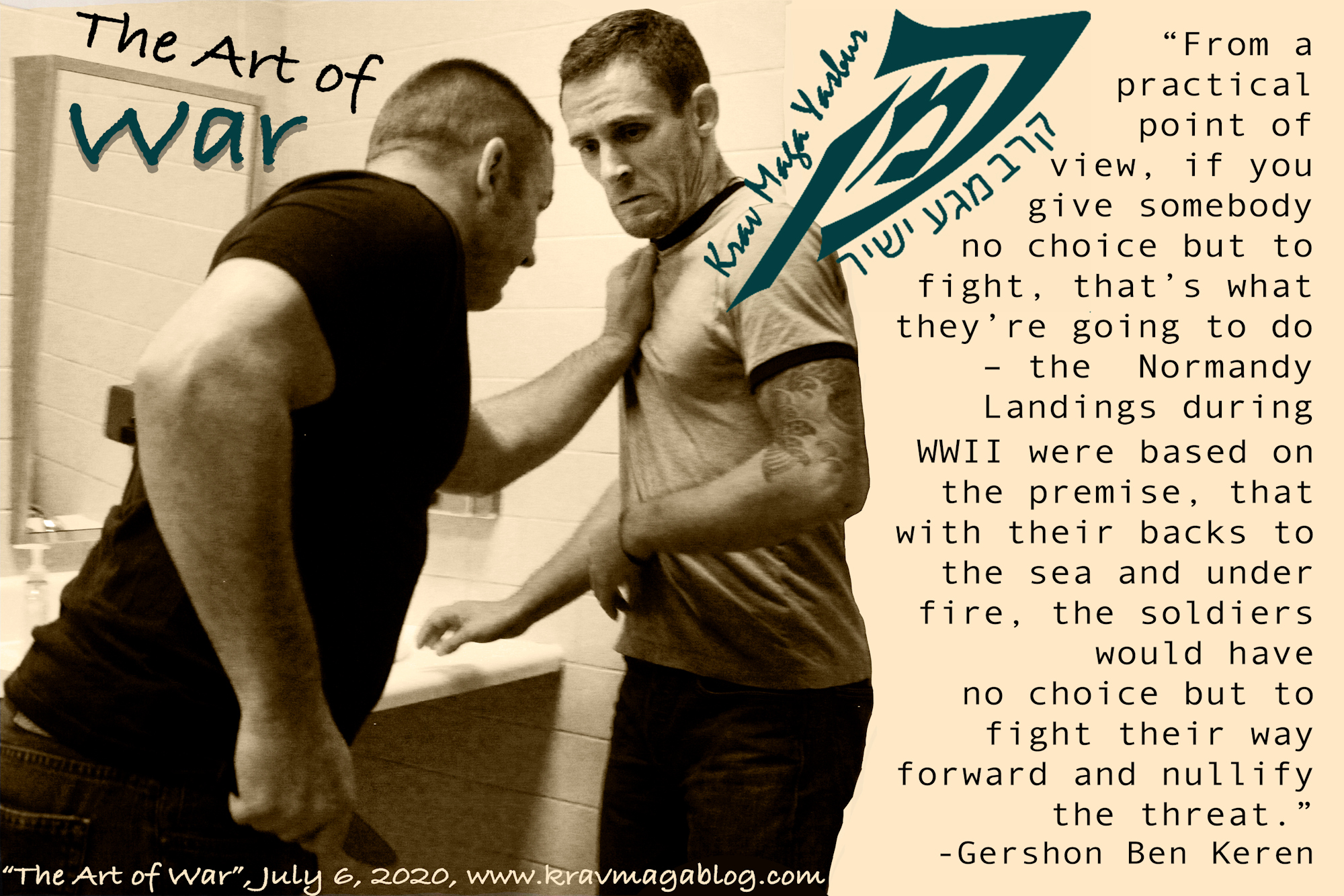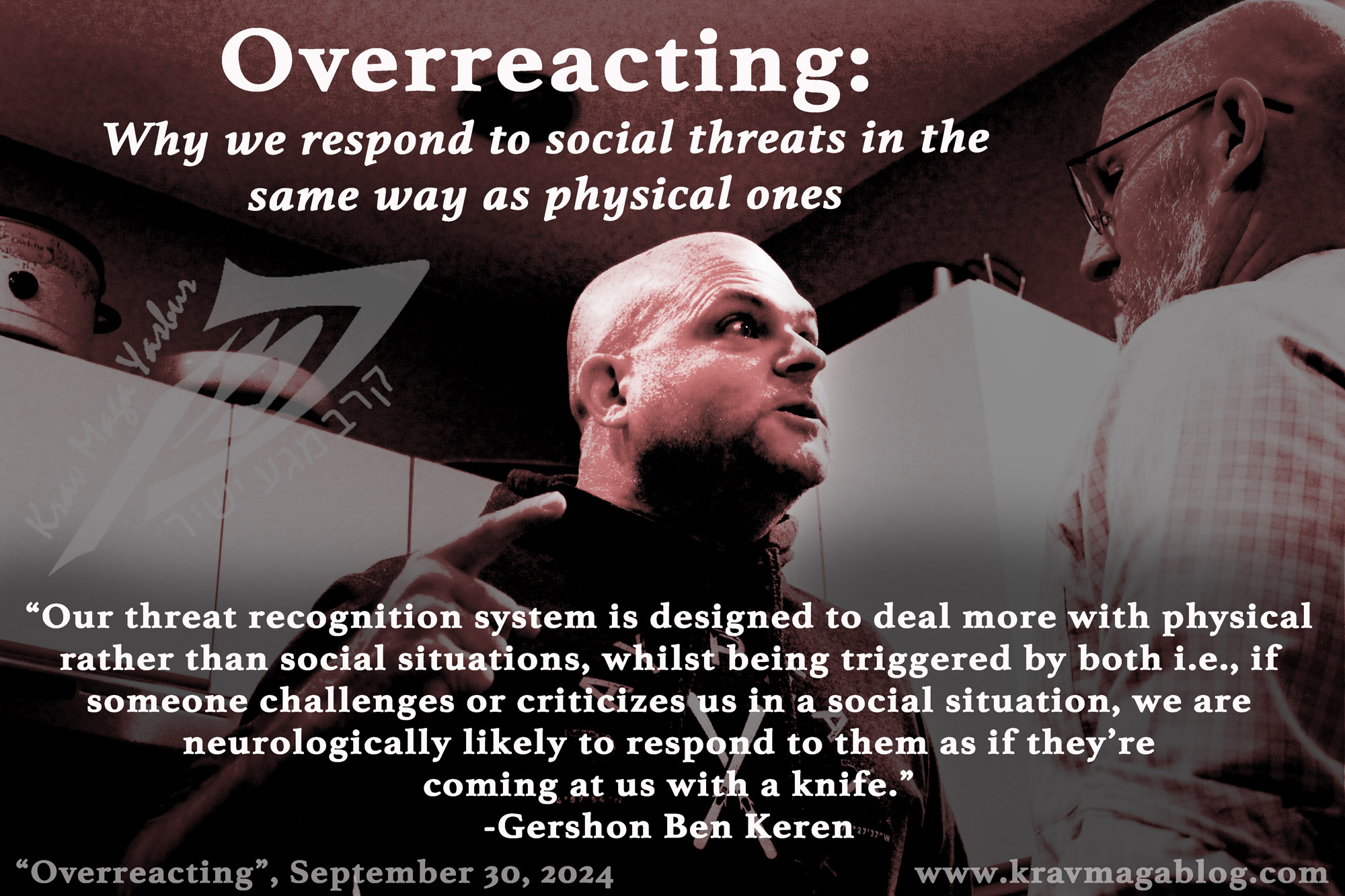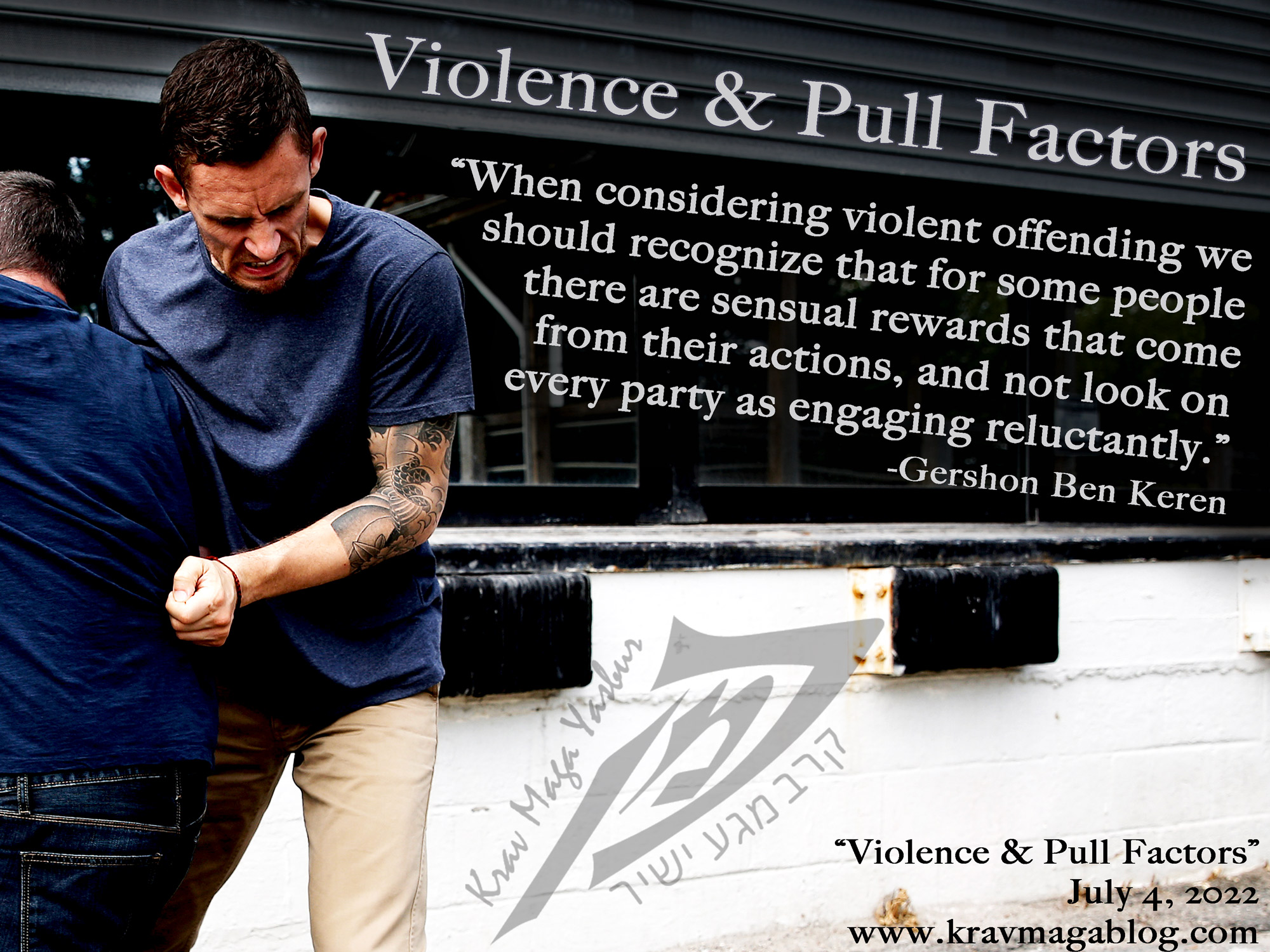Ringcraft For The Street, is an article written by Gershon Ben Keren, a 5th Degree Black Belt in Krav Maga, who teaches Krav Maga in Boston, MA. He has also authored three Amazon best-Selling Books on Krav Maga.
It is possible to have the strongest punch on the planet, and never be able to land it with any force in a real-life violent encounter; not because it lacks power and/or commitment but because the person who is the intended target has not been positioned so that they receive the full impact of the strike. This is something I see a lot of in sparring; a person believes that they are in a good position to throw a kick or a punch but haven’t checked or taken into account whether the person they are sparring with will be able to evade, block, check or ride the strike. It is not enough for you to be in a good position to throw a strike, your partner has to also be in a disadvantaged position to receive it – if you want it to have maximum effect. I repeat it a lot in regular self-defense classes, as well as in sparring classes, as it applies to both, “Whoever controls the movement of the fight, controls the fight.” For your striking to have maximum effectiveness, you need to be able to position your assailant (or sparring partner), in their least optimal position. In reality based self-defense training, this often gets forgotten and overlooked, as students are simply encouraged to strike their attacker with full power and commitment and “ignore” or not take into account how the individual they are trying to punch or kick is positioned.
There are two basic positions you want to try and put an assailant in: either stable or unstable. If you are trying to move your attacker either to push them back, or to throw them, you need to make their structure unstable. If you want them to absorb the full force of a punch or kick, you need to stabilize them, so that none or little of your force/energy is wasted or transferred into movement e.g. if you are delivering a front kick to someone who is moving backwards, because they are unstable, much of your power will be transferred and added to their backwards movement – if the person has transferred their weight forward and is rooted and stable, the full force of the kick will be absorbed by them. When people are in unstable positions, the effect of a strike will be different. If the front kick is used as a counter to someone throwing a roundhouse kick, where they are standing on one leg i.e. in an unstable position, the kick is likely to knock them over; it creates movement, rather than absorption.
This can be a difficult concept and idea for people who only practice their striking statically on pads. A lot of people in the Krav Maga and reality based self-defense community practice their striking against a pad-holder who is static; somebody who has already been positioned to absorb the full power of the kicks and punches etc. The result is that the person practicing their strikes feels the full force of them, without learning how to reflect this is a real-life situation, by getting their assailant to be stabilized in a similar manner. Only training statically, means that you will never learn to control another person’s movement, and if you can’t do this you are relying on them to move into position for you, and for you by chance to throw a strike at this exact moment; it may happen for you but only by luck i.e. you get a lucky punch etc.
Not only do you have to be able to move people into positions that are disadvantageous to them, so that they are easily moved (if that is your goal), or so that they end up absorbing the full power of your strikes, but you also need to learn how to effectively strike when you are moving i.e. when you are in an unstable position. This flies contrary to the way many people practice their striking; the person holding the pads is stable, the person striking the pads is stable – although this can be a useful way to train striking, it’s not something that reflects the dynamism of a real-life violent encounter, where both parties are moving. If you can only generate power when you are static and stable, you may be found wanting when you find yourself having to strike when moving; either backwards or forwards etc. Striking with movement, and when moving, is an important skillset to have and develop. There are also types of strikes that lend themselves to movement in a way that others don’t, and having a mix of the two will round yourself out as a fighter.
To put it simply this skillset of being able to stabilize your opponent when striking, controlling their movement, and striking when moving is something that boxers understand very, very well; it’s their ring-craft. Whilst it can’t be replicated directly for real life encounters, the principles that these fighters use can be absorbed and transferred outside of the ring – a good boxer knows how to setup a punch to have maximum effect, and those of us whose interest is in reality based self-defense would do well to learn from them. We have to recognize that sometimes the effect of our strikes should result in movement rather than absorption, such as when we kick somebody to be able to disengage etc. however the principles are basically the opposite of those we’d use when stabilizing an assailant.
There are few moments when you can properly position yourself against a real-life attacker; one of these is in the pre-conflict phase, when you may still be engaged in some form of verbal exchange with your aggressor – most fights and violent encounters occur face-to-face, and are preceded by dialogue. This is the time when you can move yourself out of striking range, but still remain with in talking distance, and move yourself somewhat offline. This means that your assailant has to shift weight and close distance before they can assault you; two things that result in them moving from a stable position, to an unstable one (whilst they move) back to a stable one etc. Ensuring that they have to complete this process, means that you have an opportunity to strike them when moving, or when they sink their weight – and become stable again (after they’ve closed the distance). This is the ring-craft you have to develop for real-life situations. There are obviously situations in the fight where you want to control an aggressor’s movement to walk them on to your strikes but this is a much more “messy” type of situation. Forcing somebody to commit their weight at the initial moment of an attack, is cleaner and ends the confrontation quicker.
0 COMMENTS














